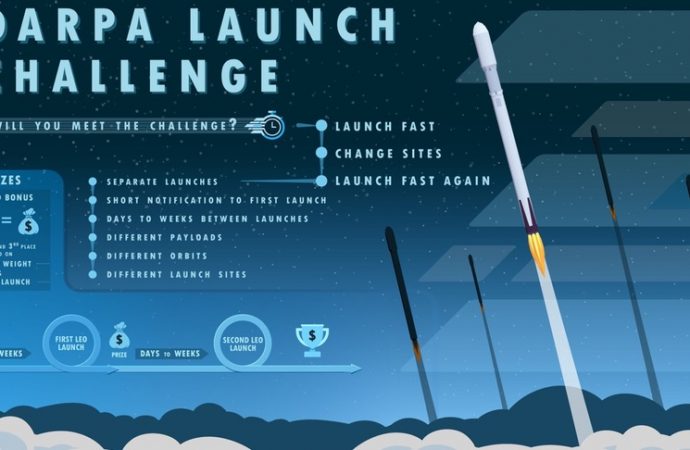DARPA has identified eight sites in the United States that it plans to use for a commercial launch competition, a selection that addresses one of the major concerns of potential competitors.
DARPA announced Nov. 6 that it selected locations from Alaska to Florida that will serve as potential launch sites for its DARPA Launch Challenge, a competition the agency announced earlier this year to promote the development of responsive launch systems.
The sites feature locations that can support horizontally or vertically launched vehicles. The vertical launch sites include Mid-Atlantic Regional Spaceport in Virginia, Cape Canaveral in Florida, Vandenberg Air Force Base in California, Pacific Spaceport Complex-Alaska and Naval Outlying Field on San Nicolas Island, off the California coast.
The horizontal launch sites include Cecil Spaceport in Florida, Cape Canaveral, Spaceport America in New Mexico and Mojave Air and Space Port in California. All eight locations already have spaceport licenses from the Federal Aviation Administration with the exception of Naval Outlying Field on San Nicolas Island, a U.S. Navy facility used for missile testing.
The selection of the sites addresses one concern companies had about the competition. FAA launch licenses are site-specific, requiring applicants to specify the location or locations they plan to launch from. While regulatory reforms being considered by the FAA could allow licenses to be site-independent in the future, those changes are unlikely to be in place before the competition takes place in late 2019.
At an industry day for the DARPA Launch Challenge in May in Los Angeles, one recommendation from participants was for DARPA to provide a shortlist of potential launch sites to address that uncertainty. “I think we’re going to provide more information on that as we get into the pre-application process,” said Todd Master, the program manager for the competition at DARPA’s Tactical Technology Office, at the event. “There are a finite number of sites, but we still want to be able to keep our options open for facilities.”
The competition requires companies to perform two launches from two separate sites weeks apart, with the specific launch site and payload for each launch provided on short notice. Teams that complete the first launch will each receive $2 million, with prizes of $10 million, $9 million and $8 million going to the top three teams that also complete the second launch. Factors that include mass to orbit, time to orbit and orbit accuracy will be used to rank the top three teams.
DARPA also announced Nov. 6 that 18 teams had passed the first step in the competition, a pre-qualification phase. In that phase, DARPA confirmed that the teams had proposed “a viable solution for flexible and responsive launch,” according to its statement. DARPA didn’t list the teams that completed pre-qualification but plans to later identify the teams that complete the overall qualification phase.
That qualification includes submitting a formal application to DARPA by the end of November, followed by acceptance of an FAA launch license application no later than Feb. 1. Teams that successfully complete the qualification phase will each receive $400,000.
While DARPA didn’t disclose any of the competitors, it suggested it’s heard from a wide range of potential competitors. “Response from teams with different ways of achieving flexible and responsive launch solutions on short notice has been tremendous,” Master said in the statement. “The different approaches to technologies used, launch requirements, fuel use and teaming are a testament to the evolving space community.”
Source: Space News

































Leave a Comment
You must be logged in to post a comment.